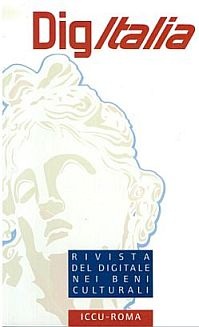IDP - Illuminated Dante Project: un archivio e database per la più antica iconografia dantesca (secc. XIV-XV)
DOI:
https://doi.org/10.36181/digitalia-00022Keywords:
Dante, Divina Commedia, database, manoscritti miniati, illuminated manuscriptsAbstract
Born in 2015 and linked to the Department of Humanities of the University of Naples “Federico II” and the Department of Humanities and Cultural Heritage of the University of Campania “Luigi Vanvitelli”, as well as to various national and international Institutions, IDP - Illuminated Dante Project aims to providean archive of Dante’s illuminated manuscripts between the fourteenth and fifteenth centuries, with its open access database, which will be a useful tool for understanding the complex mechanisms that regulate the relationships between Dante’s verses and iconography. This paper presents the structure of the IDP database, starting from the articulations of the back-end.Downloads
Download data is not yet available.
Downloads
Published
2020-12-23
How to Cite
Perna, C. (2020). IDP - Illuminated Dante Project: un archivio e database per la più antica iconografia dantesca (secc. XIV-XV). DigItalia, 15(2), 150–158. https://doi.org/10.36181/digitalia-00022
Issue
Section
Projects
License
Copyright (c) 2020 DigItalia

This work is licensed under a Creative Commons Attribution-ShareAlike 3.0 Unported License.
The Authors publishing their contributions on this journal agree to the following conditions:
- The Authors detain intellectual property rights of their work and transfer the right of first publication of the work to the journal, under the following Licence: Attribution-ShareAlike 3.0 Italy (CC BY-SA 3.0 IT). This Licence allows third parties to share the work by attributing it to the Authors and clarifying that the work has been first published on this journal.
- Authors can sign other, non-exclusive licence agreements for the dissemination of the published word (e.g. to deposit it in an institutional archive or publish it in a monography), provided that they state that the work has been first published on this journal.
- Authors can disseminate their work online (e.g. in institutional repositories or on their personal websites) after its publication, to potentially enhance knowledge sharing, foster productive intellectual exchange and increase citations (see The Effect of Open Access).






